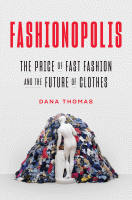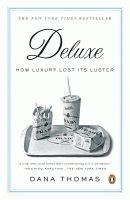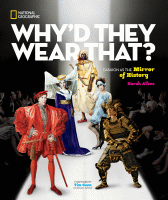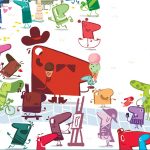by Alex Genis, Foreign Languages Collection Management Librarian at Mackin
 Many of our high school age teens can be overly conscious about what they wear and what their clothing says about them. Fashionopolis is a wake-up call to those who think that the choice of what they wear is mostly about price, looking up to date or buying at the right store. That bright and optimistic outlook is belied by Dana Thomas’ new book that dissects our profit-driven clothing industry that is based on inhumane sweatshop labor, ecological degradation, and waste.
Many of our high school age teens can be overly conscious about what they wear and what their clothing says about them. Fashionopolis is a wake-up call to those who think that the choice of what they wear is mostly about price, looking up to date or buying at the right store. That bright and optimistic outlook is belied by Dana Thomas’ new book that dissects our profit-driven clothing industry that is based on inhumane sweatshop labor, ecological degradation, and waste.
The author traveled around the world to compile a scathing yet reasoned expose of the impact of our daily decisions of what to wear. She starts with cringe-worthy stories of workers mostly in Asian countries who sacrifice their dignity and health for pennies a day, she shows the environmental damage caused by the creation and transportation of our clothing, and she explains fiscal restraints of the supply chain that demands that clothing be destroyed if it doesn’t sell in order to keep clothing prices up. And Thomas touches on the manipulation of our tastes, insecurities, and habits to get to our wallets.
Fashoinopolis is far more than an exposé of the fashion or clothing industry. It is informative, very accessible, easily absorbed and ultimately hopeful. It’s also full of graspable and fascinating anecdotes. For instance, did you know that 6 billion pairs of jeans are produced annually, almost enough for everyone on the planet? Jeans “are the most polluting of garments—in their creation, and in their afterlife.” And the average American owns 7 pairs and yet buys 4 new pair every year. The facts presented demand that readers stop and think about clothing in the same way we may have second thoughts about using disposable plastic water bottles. The teen uniform of jeans and t-shirts starts taking on a dark and somewhat guilt-inducing aspect.
Thankfully Dana Thomas also includes promising developments in the clothing industry including the stories of start-ups who are creating clothes that are environment friendly, new materials that involve less abuse of animals or natural resources and the recent movement wherein some young people have embraced shopping at thrift shops where recycled clothing is inexpensive and available for a second life.
Bringing Dana Tomas’s eye-opening Fashionopolis to the attention of your secondary students is a service.
 This earlier work by Dana Thomas is a look at luxury brands like Gucci, Prada, Polo, and Coach. We all know these brands that are expensive and are believed to have a certain elevated quality and thereby confer on the wearer an elevated status. Whether it’s the Kardashians with Gucci luggage and Hermes scarves or a neighbor wearing a prominent Ralph Lauren logo, we are all familiar with this phenomenon. To quote Marshall McLuhan” the Medium is the message”.
This earlier work by Dana Thomas is a look at luxury brands like Gucci, Prada, Polo, and Coach. We all know these brands that are expensive and are believed to have a certain elevated quality and thereby confer on the wearer an elevated status. Whether it’s the Kardashians with Gucci luggage and Hermes scarves or a neighbor wearing a prominent Ralph Lauren logo, we are all familiar with this phenomenon. To quote Marshall McLuhan” the Medium is the message”.
DELUXE: How Luxury Lost It’s Luster tells the history of these legendary luxury brands that often started out as family owned businesses with a painstaking commitment to craftmanship that made them famous and their subsequent transitioninto parts of a multibillion dollar growth-focused industry. In the pursuit of greater profits, luxury companies, “turned their sights on a new target audience: the middle market, that broad socioeconomic demographic that includes everyone one from teachers and sales executives to high-tech entrepreneurs, McMansion suburbanites, the ghetto fabulous, even the criminally wealthy.”
This is great journalism that is both very enlightening and highly entertaining.
 For Younger readers: It’s never too soon for kids to take a step back and think about the clothing they see worn in the world around them. A look at clothing’s evolution as a necessity and
For Younger readers: It’s never too soon for kids to take a step back and think about the clothing they see worn in the world around them. A look at clothing’s evolution as a necessity and as fashion is fascinating fun for kids whether they look at images people wearing animal skins, togas, or silk stockings in the French royal court or even mom’s prom pictures with the puffy hair.
as fashion is fascinating fun for kids whether they look at images people wearing animal skins, togas, or silk stockings in the French royal court or even mom’s prom pictures with the puffy hair.
Eyewitness: Costume and Why’d They Wear That?: Fashion as the Mirror of History is a pair of highly illustrated books by two storied publishing houses, DK and National Geographic, serve as great introductions to the subject of clothing.






